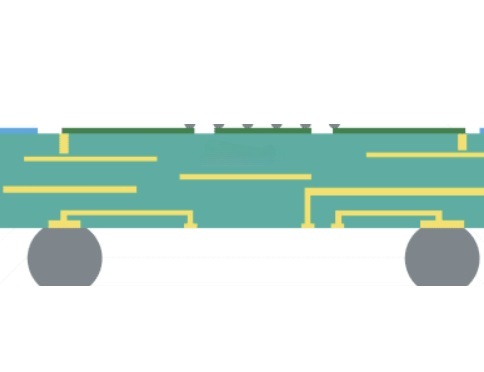Antenna-in-Chip vs. Antenna-in-Package: Manufacturing Processes, Market Trends, and the Role of Microscopy

As the wireless communication landscape advances toward mmWave, 5G, and 6G, the integration of antennas into RF systems has become more crucial than ever. Learn about the differences between Antenna-in-Chip (AiC) and Antenna-in-Package (AiP), their manufacturing processes, market trends, and the indispensable role of microscopy in their development.
Unveiling Antenna-in-Chip (AiC): The Manufacturing Process
Antenna-in-Chip (AiC) integrates the antenna directly on the semiconductor die, typically using the top metal layers. This approach allows for ultra-compact designs and seamless integration with RF front-end circuits, although it has technical limitations at higher frequencies.
The typical process flow for AiC includes: antenna design in metal layers, dielectric and passivation layers, and pre-packaging RF testing. The antenna is patterned on upper metal layers (e.g., M6–M9) of a chip using standard lithography and etching techniques. Passivation materials are applied to manage parasitic effects and ensure RF performance stability.
Exploring Antenna-in-Package (AiP): The Manufacturing Process
Antenna-in-Package (AiP) places the antenna in the package substrate rather than on the silicon chip. This approach offers greater design flexibility, better RF performance at mmWave frequencies, and supports more complex configurations such as beamforming arrays.
The typical process flow for AiP includes: antenna formation on substrate, flip-chip or fan-out integration, and vertical array and beamforming design. Antennas are patterned on materials such as LCP, LTCC, or organic substrates, with multi-layer stackups often used to tune impedance and radiation efficiency. The chip is mounted close to the antenna via flip-chip or fan-out wafer-level packaging to minimize signal loss. Multi-antenna arrays are more feasible in AiP, making it ideal for 5G/6G applications requiring spatial multiplexing.
Key Industry Players and Market Adoption Trends
In the Antenna-in-Chip (AiC) space, key industry players include Intel, MediaTek, and Qualcomm, focusing on compact IoT and ultra-low-power devices. For Antenna-in-Package (AiP), leading manufacturers are Samsung, Apple, Qualcomm, Murata, Amkor, ASE Group, and JCET.
AiC is currently limited to niche applications like ultra-compact IoT sensors, biomedical devices, or radar-on-chip systems. Conversely, AiP has become the dominant choice for consumer-grade 5G smartphones, automotive radar, and satellite communications, reaching high-volume production and evolving toward 6G readiness. The demand for AiP is skyrocketing due to the deployment of mmWave 5G infrastructure, while AiC is seeing increased interest in highly integrated modules.
Comparative Analysis: AiC vs. AiP
Antenna-in-Chip (AiC) and Antenna-in-Package (AiP) each have their strengths and limitations. AiC offers very high integration levels with on-die integration, but it has low design flexibility due to limited mmWave performance due to losses in silicon. However, it has lower manufacturing costs in volume, although high non-recurring engineering (NRE) costs.
On the other hand, AiP provides high integration levels within the package, offering greater design flexibility with various materials and layout freedom. It boasts high mmWave performance due to optimized substrates, with medium to high manufacturing costs depending on the packaging. While AiC is ideal for IoT, radar-on-chip, and biomedical applications, AiP is more suited for smartphones, automotive radar, and satellite communications.
The Role of Advanced Microscopy in AiC and AiP Development
High-resolution microscopy tools are indispensable in both AiC and AiP workflows, from initial R&D to production quality control. In AiC, Scanning Electron Microscopy (SEM) is used to verify antenna pattern precision, metal etch quality, and surface defects.
For AiP, X-ray microscopy and Focused Ion Beam (FIB) cross-sectioning help validate multi-layer stackups, antenna-substrate alignment, and bonding quality. Optical Microscopy is employed in volume inspection for antenna arrays and interconnect routing. Increasingly, AI-based image analysis is being applied to automatically detect pattern misalignments, bonding anomalies, and structural defects across thousands of antenna units in a wafer or substrate.





